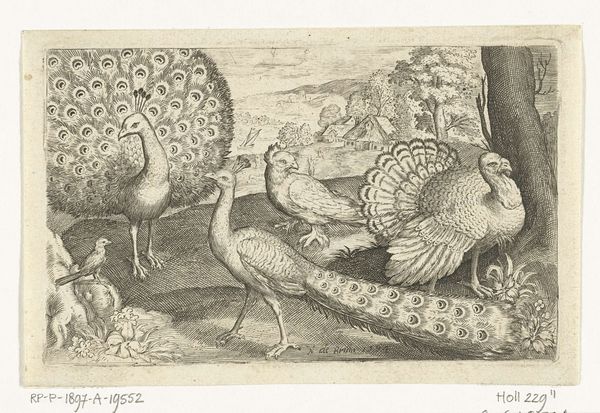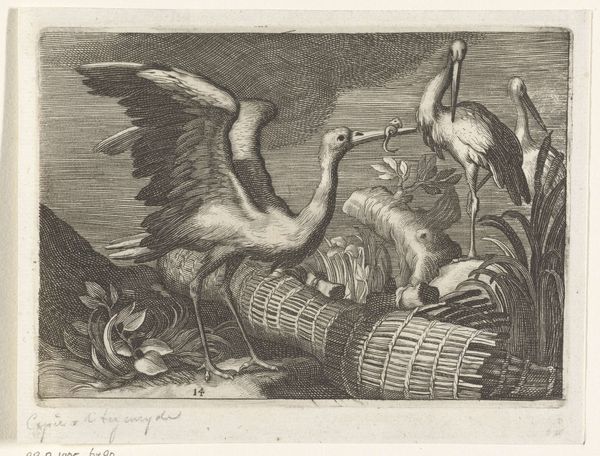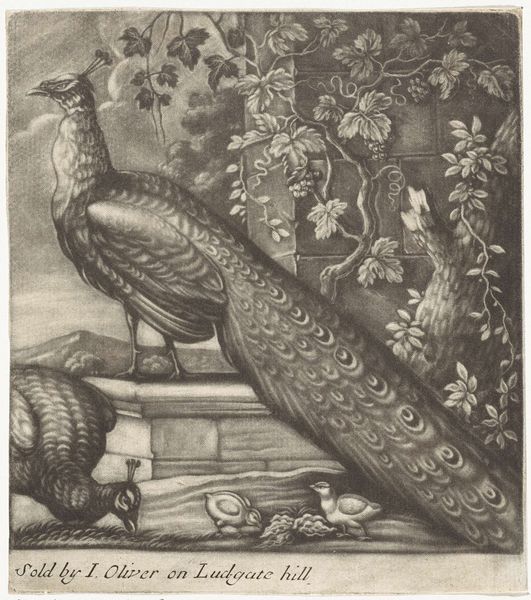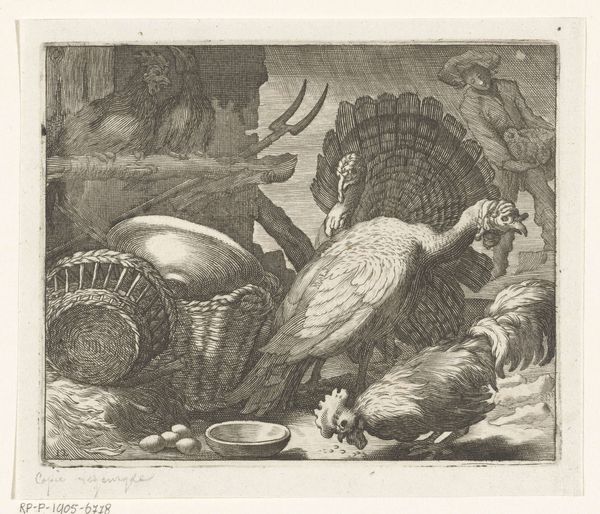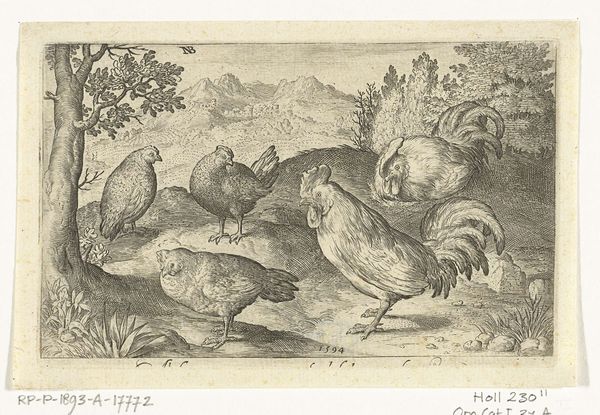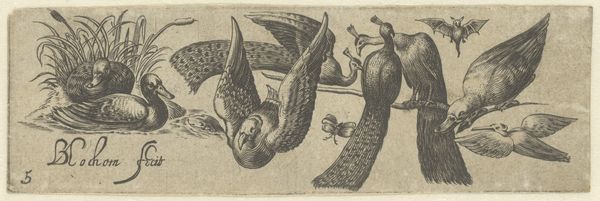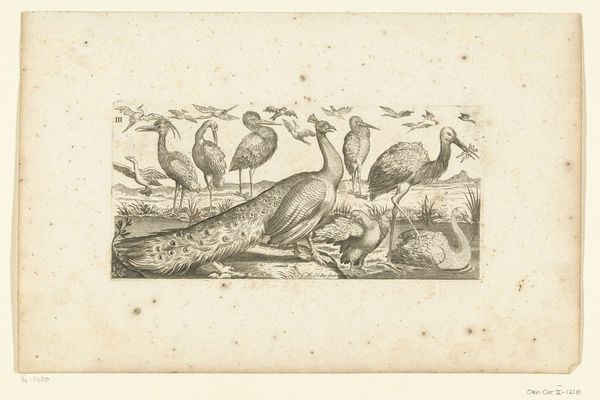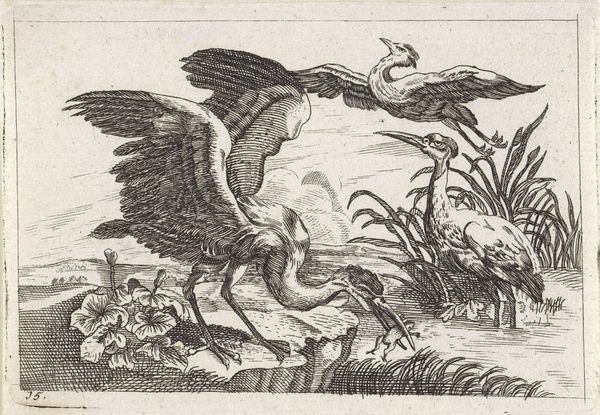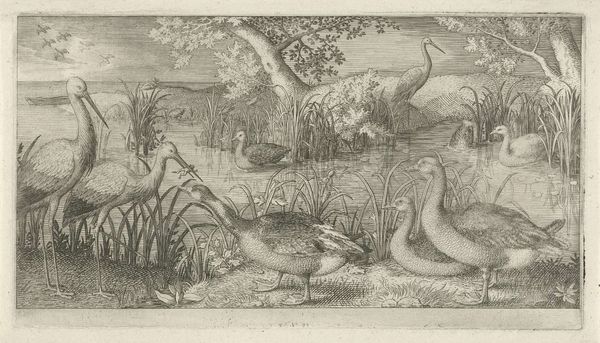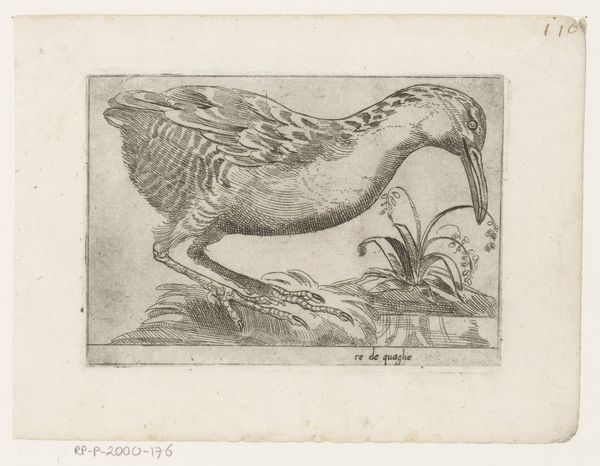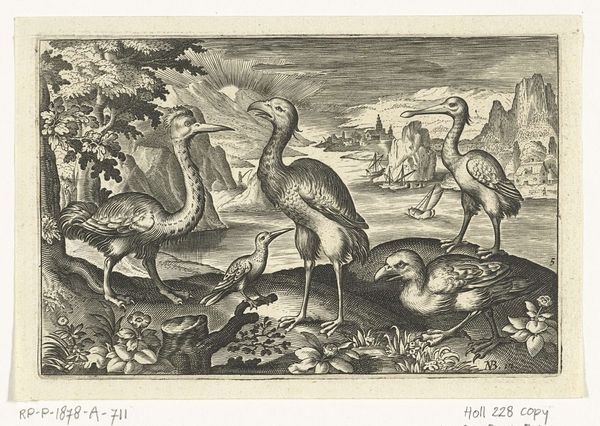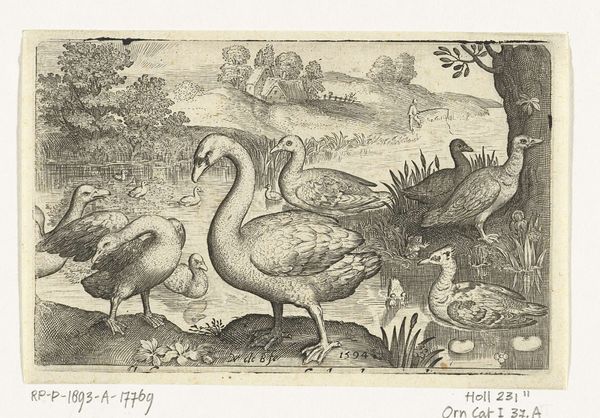
#
pencil drawn
#
pencil sketch
#
old engraving style
#
caricature
#
cartoon sketch
#
personal sketchbook
#
pen-ink sketch
#
sketchbook drawing
#
pencil work
#
sketchbook art
Dimensions: height 80 mm, width 126 mm
Copyright: Rijks Museum: Open Domain
Editor: So, this is an etching called "Vijf vogels waaronder lepelaar," or "Five Birds Including a Spoonbill," made sometime between 1594 and 1644 by an anonymous artist. It's at the Rijksmuseum. I find the scene so curious. The birds seem posed, almost staged. What do you see in this piece? Curator: What I see is a representation of power dynamics and the exoticization of the natural world. Consider the context: The Dutch Golden Age was a period of intense colonialism. These birds, particularly the peacock, could represent wealth and global reach, brought back from distant lands and displayed as trophies. How might this relate to the suppression and exploitation of colonized peoples and their lands? Editor: I hadn’t thought about it that way. I was focusing on the surface, the kind of odd composition, but your interpretation makes so much sense. It’s like these birds are stand-ins for something else, maybe even people. Curator: Exactly! Consider the social hierarchy. The elaborate plumage could symbolize aristocratic vanity, while the seemingly humble spoonbill is an undercurrent implying commentary on the social order. Does the spoonbill then reflect a specific marginalized group within Dutch society at that time? Editor: Wow, it is making me think about the hidden narratives within what appears to be a simple nature scene. I never thought to connect something like this to colonization and social status. Curator: And consider the gaze—how the birds are presented for our observation, their “otherness” emphasized, inviting viewers to assert their dominance. What impact could these kind of artworks have had on reinforcing the perceived right to dominance during this time period? Editor: So, it is not just a picture of birds, but a statement of power, then and perhaps even now. It's a wake-up call that art isn't neutral, is it? Curator: Precisely. Art serves as both a mirror and a maker of its historical moment. Recognizing that allows for richer, more critical engagement.
Comments
No comments
Be the first to comment and join the conversation on the ultimate creative platform.
